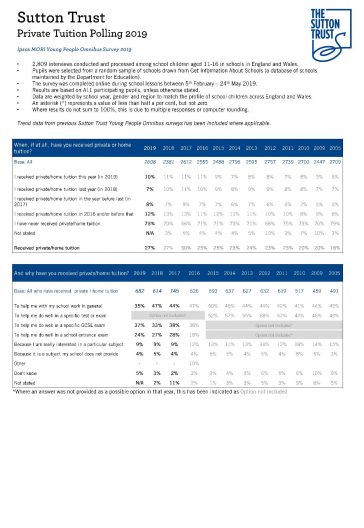Report Overview
For the first time this year we surveyed schools on how they interact with paid-for private tuition, conducted by the National Foundation for Educational Research (NFER). Findings show a number of secondary school teachers have taken on paid-for private tuition outside of the classroom, with most having done so after direct contact with parents. This highlights the importance parents place on tutoring.
In addition, ‘Private Tuition 2019’ reveals findings from our annual barometer of how prevalent private tuition is in England and Wales. Conducted by Ipsos MORI, we look at how common receiving private tuition has been over time and who is most likely to receive this extra help.
